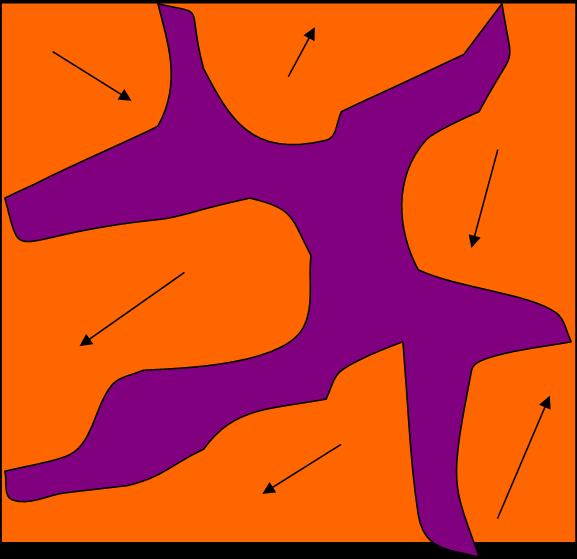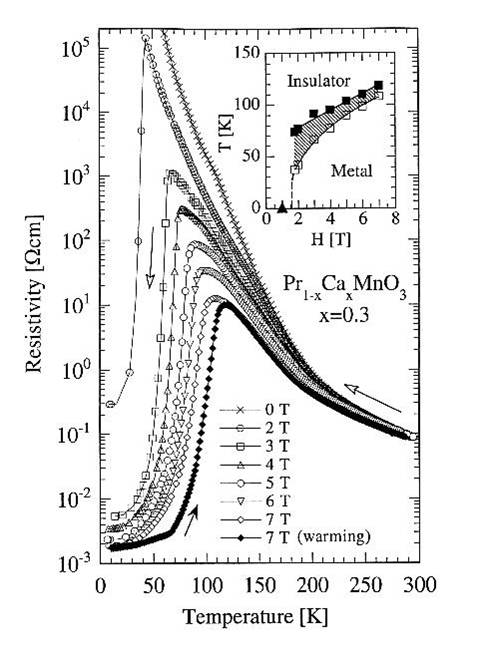One of the most active areas of
research in condensed matter physics studies the origin of large
magnetoresistance effects in particular materials. Among them, the Mn
oxides widely known as manganites are much analyzed due to the
existence of a phenomenon called ``colossal
magnetoresistance'' (CMR), where the resistance of the sample
changes dramatically -- by many orders of magnitude --
once relatively small fields are turned on. The magnetoresistance ratio
[R(0)-R(H)]/R(H) can be as large as
100,000%. An example, from the group of Y. Tokura with the University
of Tokyo,
is shown for PrCaMnO. These materials have potential applications as
read sensors in computers.
Considerable theoretical and experimental work in this area of research
has converged to a view of the state that has the CMR effect as made
out of nanoscale islands of the two leading competing states:
ferromagnetic metallic (FM) and
antiferromagnetic (AF) insulating. A sketch is shown in the figure,
where the arrows denote the randomly oriented FM clusters, which are
separated by walls made out of the AF state.
Several groups at ORNL and UT are actively working in projects that
will help in the understanding of these compounds, using a variety of
techniques. A review of manganites can be found here.
Mn oxides are routinely studied using neutron scattering techniques,
both elastic and inelastic, while Monte Carlo simulations address the
origin of the effect employing the excellent
computational facilities at the Condensed Matter Science Division
(cluster of PCs) and at the Computational Sciences Division (a variety
of supercomputers).
 |
 |